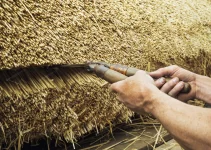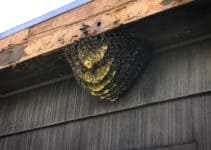The thatched roof is one of the most traditional roofing styles to grace the countryside of Britain. A thatched roof is a perfect example of a functional and pleasing structure to the eye.
The main aim of a thatched roof is not just to look pretty but to create a waterproof roof that can cope with the harsh British weather, such as strong winds and heavy rainfall.
The thatched roof ridge is a complicated but exciting aspect of thatching. It adds both strength and character to the roof. Read on to find out more about the thatched roof ridge.
What Is The Ridge On A Thatched Roof?
The ridge is the horizontal line running along the top of the thatch on a house where the two sides meet.
The thatch is turned up to form a ridge and is held in place by a small amount of ‘ridge straw,’ which is twisted into tight coils and secured with a length of ‘ridge twine.’
This wooden spike is driven into the top of the roof to give the ridging bundles something to hang on to and for an aesthetic purpose.
A ridge is made up of two layers of thatch. The first layer is rolled up into what is known as a “thatch roll,” and then the second layer is rolled around it.
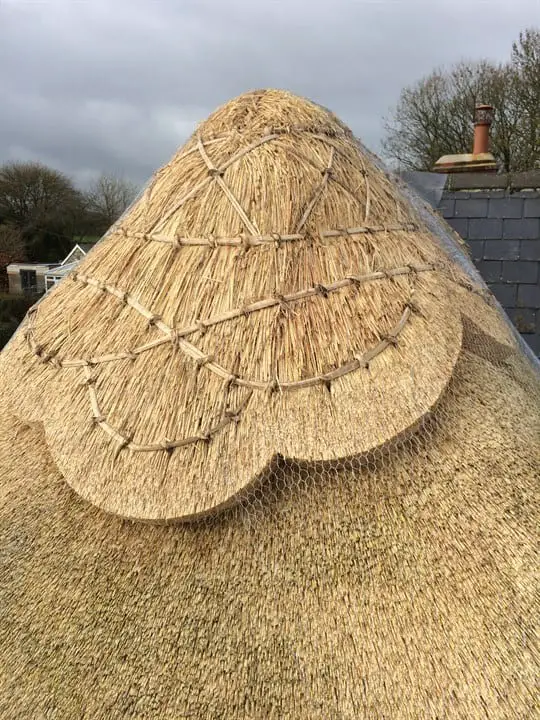
The second layer is attached to each side of the roof using rope and pegs. The rope used for this purpose is called “ridging rope” and is made from tough polypropylene and has knots at regular intervals.
The ridging rope passes through holes in the thatch roll (which are also marked with knots) so that you can tighten it to make sure that there are no gaps between the two layers of thatch once it has been tied down.
In addition to providing extra protection from rainwater running down from above, a ridge also helps to provide extra support for the weight of the thatch on either side of it.
Traditionally, ridges were built using straw and water reed, with the ridge being held in place by wooden battens. Today, we use combed wheat reed to make our ridges because it has a higher density and longer life span than straw.
The combed wheat reed ridges are then bound with a string or wire binding, which holds the ridge together and gives it its shape.
In old buildings like medieval churches, you might see a stone ridge; this is because stone is one of the most durable materials available, and these buildings had to last for centuries.
In modern houses, timber or metal frame will be erected first, then covered with thatch or shingles. On top of this sits a layer of felt impregnated with bitumen or tar to make it waterproof.
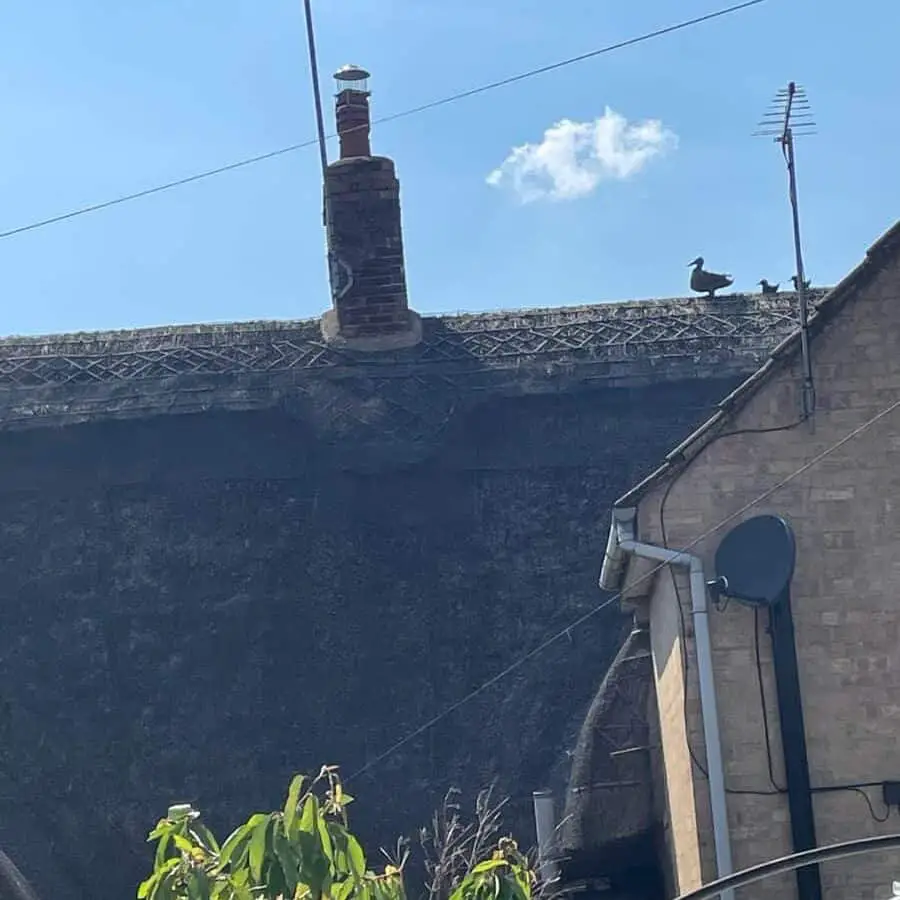
How Long Does A Thatch Ridge Last?
To answer the question of how long a thatch ridge lasts, it is necessary to consider what the ridge is made of and how it is used. The vast majority of ridges are made of straw, with the occasional one being made of reed.
A straw ridge can last for up to 30 years and a reed ridge for up to 40. A thatch roof lasts for about 20 years, which means that a ridge will last for 15-20 years on average.
The overall life expectancy of a ridge depends on whether it’s open or closed, how much water gets into the roof and how well the roof was thatched in the first place.
In an open ridged roof, quite a lot of water passes through the ridge. This causes the straw inside to rot and break down quicker than it would otherwise do.
In addition, lots of wind blows through an open ridge which tends to cause more damage over time than rain does (although this tends not to be apparent for some time).
In a closed ridged roof, less water passes through, which slows down the rate at which the straw rots. If rain does get into the roof, then it usually comes from around chimneys and vents and from the gable ends, where it doesn’t generally cause a lot of damage.
The overall life expectancy of a closed ridge is about twice that of an open ridge.
How well a ridge is thatched also has an impact on its life expectancy. A well-thatched ridge will last for longer than a badly-thatched one.
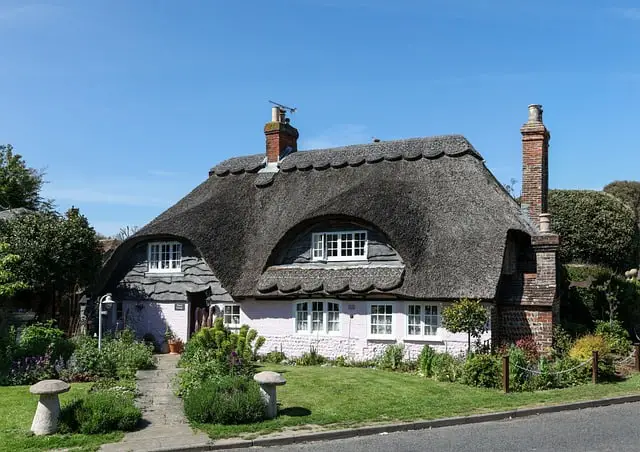
Types Of Thatched Ridge
Block Ridge
Block ridge is one of the most modern types of thatched ridge. It consists of a series of small blocks placed in a line across the ridge.
The blocks are then bound together by stainless steel wire and covered with grass to conceal them.
This type of thatched roof can be used on any style or shape of the roof, including those with hips and valleys.
The block ridge is an ideal choice for many reasons. Firstly, the blocks provide excellent ventilation, which is essential when considering fire safety. Block ridges also protect against leaks and water penetration on your roof.
Finally, the interlocking design means that you can repair individual blocks as and when they become damaged rather than having to replace the entire roof (which would be necessary if using traditional wooden battens).
Sod Ridge
The sod ridge was the earliest type of ridge used and is still in use today. This ridge is made of sods cut from the thatching field.
The sod has a slit down its length, and the sods are laid on the edge, with the grass side down. The sods are then pegged to the eaves with hazel pegs to keep them in place.
The advantage of this type of ridge is that it is relatively easy to construct and maintain. The disadvantage is that it can be fragile if not maintained correctly, and it has to be replaced quite often.
A variation of this ridge is the turf or peat ridge, which utilises a ‘turf’ cut from an area where peat has formed naturally. This ‘turf’ is then split and laid as described above.
These ridges are generally found only in areas where there is a good supply of natural growing peat, such as Ireland, Scotland, and Northumberland.
Flush Ridge
Although rarely seen on thatched roofs today, the flush ridge is the traditional method of laying a ridge. It is used on any roof which was small enough to be thatched by one person alone.
The layers of straw are laid in a straight line down the roof. A piece of timber or metal is used to hold the end of each layer in place (known as a ‘peg’).
The pegs are removed when the layer is complete and then replaced at the start of the next layer. The layers are built until they reach the desired height and width, producing a perfectly flush ridge.
This method is not commonly used today because it is time-consuming and challenging to achieve a watertight finish.
Heather Ridge
Heather is not a true thatching material. It is, however, a very useful covering for the ridge of a roof, as it is most resistant to wind damage.
It has been used since Tudor times and is still in use today. The ridge is covered with heather or sedge (an aquatic plant) and bound down with twine. When the heather or sedge dries out, it becomes tough and brittle.
How Much Does It Cost To Replace A Thatched Roof Ridge?
The cost of replacing a thatched roof ridge varies depending on the type of material that you are using. For example, the cost of replacing thatched ridge tiles can vary, with reed-based tiles costing more than straw-based ones.
Also, it may be worth spending a little more to upgrade your old wooden ridge to more durable plastic or clay ridge tiles.
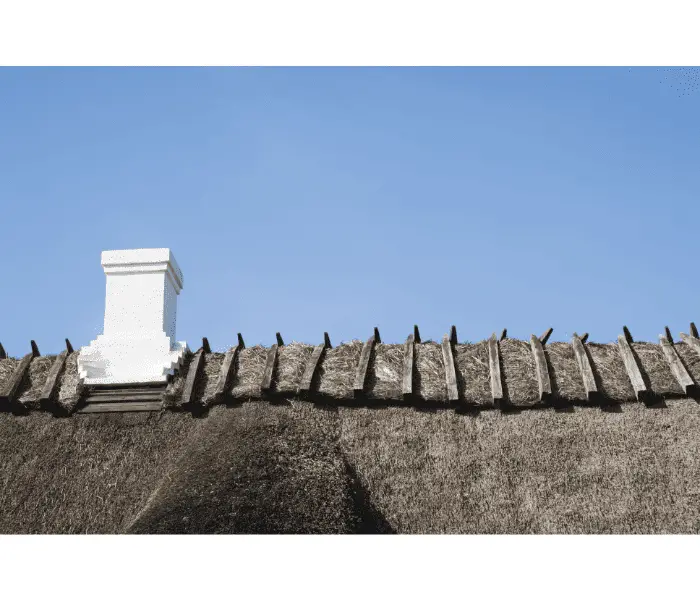
However, here are some rough figures:
The thatched ridge comprises the following parts:
- The ridge’s main body (straight length) is called the ‘spars,’ usually made from bamboo. They are either nailed or screwed together and typically have an overlapping join in the middle.
- Next comes the ‘twiddly bits.’ This is the decorative ends of the ridge woven over and under each other which is what gives a thatched roof its unique appearance. The twiddly bits can be made from several different materials, including reeds or straw, depending on what material has been used to make the main body of the roof. They might also be made from wood, which is more common in newer properties. The twiddly bits are stitched to the spars using string or wire.
- Finally, a strip of capping runs along the top of the ridge to keep out rainwater.
The cost of replacing a ridge will depend on how long it is and what material it’s made from. The cheapest ridges are those made from bamboo with reed twiddly bits.
The cost of labour will also need to be considered, as it is usually a job carried out by a professional.
The cost of replacing a thatched roof ridge will vary depending on the type of material used and the size of the roof.
Conclusion
The thatched roof ridge is an integral part of the roofing system. It sets the finish and protects the top of the roof from weather damage. There are several different types of thatched roof ridges, each with advantages and disadvantages.
Choose the right one for your roof to ensure a long and durable life.
